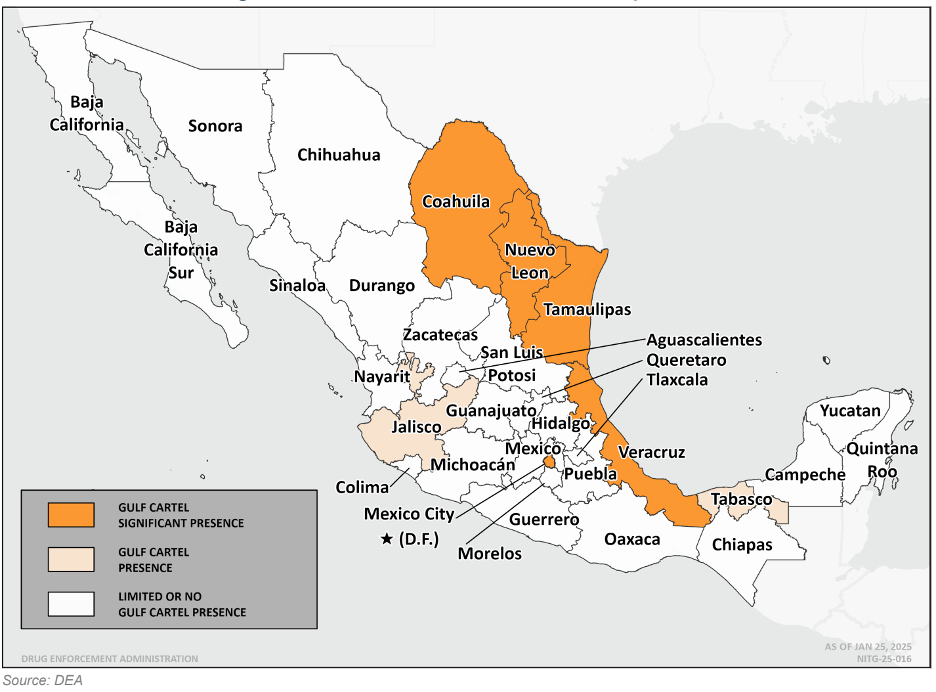In early 2025, the US designated several major drug cartels as foreign terrorist organizations, a move that triggered sanctions such as asset freezes and strict limitations on financial transactions. This action, covered in detail in the “Podmergency” Secure Line episode, was soon echoed by the Canadian government, which formally listed these groups as terrorist entities under the Criminal Code. The Canadian designation enables law enforcement to freeze cartel assets within the country.
Among the groups listed, the Gulf Cartel stands out as one of the oldest and largest criminal organizations in Mexico. By the late 1990s, the cartel was reportedly generating billions of dollars annually, and it continues to operate as a major player in the global drug trade. While it is primarily known for drug trafficking, the US government cited its use of extreme violence, including targeted assassinations of civilians and officials, as a means to intimidate the public and assert territorial control, as actions that meet the threshold for terrorism.
Keep reading to learn more about the Gulf Cartel’s financial profile and don’t forget to subscribe to stay informed of our coverage on drug cartel financing.
Origins and Operations
The Gulf Cartel, based in northeastern Mexico, has long maintained control over key segments of the US-Mexico border, particularly near the Gulf of Mexico. Its origins trace back to the Prohibition era, when it was involved in smuggling alcohol and heroin. The organization rose to prominence in 1984 under Juan García Abrego, who secured a trafficking agreement with the Colombian Cali Cartel. This alliance redirected drug routes into the US through Mexico after American authorities cracked down on Caribbean smuggling corridors. At its peak, the cartel dominated drug trafficking into Texas’s Rio Grande Valley, moving fentanyl, methamphetamine, cocaine, and heroin through its strongholds in cities like Matamoros and Reynosa in the state of Tamaulipas.
In recent years, however, the Gulf Cartel has experienced a decline, losing both territory and cohesion as it broke into rival factions. Much of the cartel’s destabilization can be traced to its own creation of Los Zetas, a militia originally formed as the cartel’s violent enforcement arm.1 By 2010, Los Zetas had grown into a powerful paramilitary force of over ten thousand, known for their extreme brutality, extortion, and kidnappings, eventually breaking away and operating independently.2 Their violence and growing ambition significantly contributed to the Gulf Cartel’s internal collapse. Today, much of the academic and investigative focus has shifted toward Los Zetas, and as a result, current data on the Gulf Cartel is often outdated or complicated by its ongoing fragmentation.





